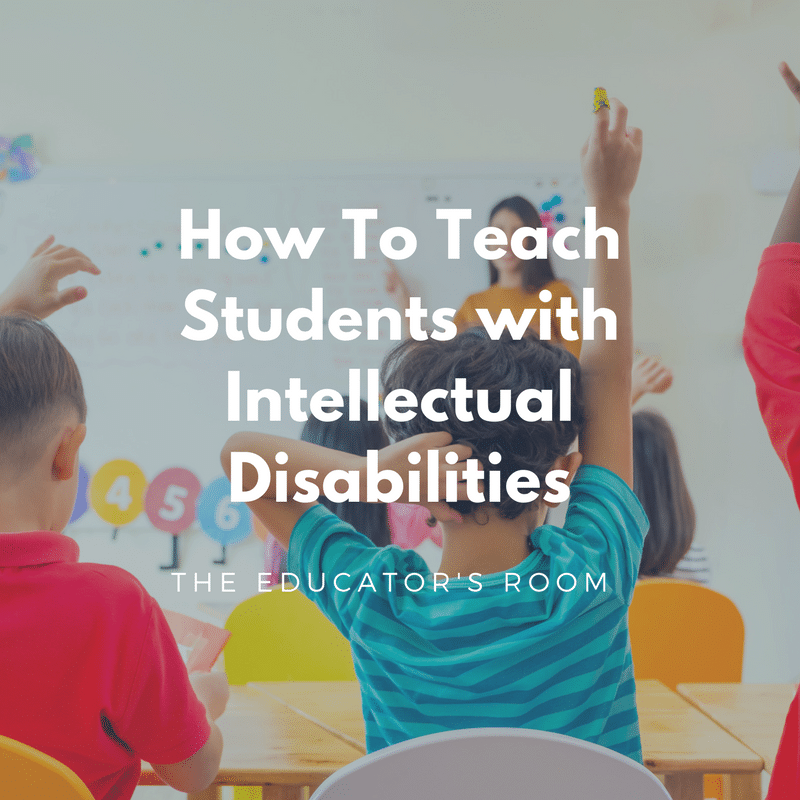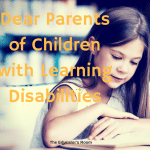Overview:
I.D.E.A. (Individuals with Disabilities Education Act), teachers will continue to see more and more students with various disabilities in the regular education classroom, including students with intellectual disabilities (ID)
As a result of I.D.E.A. (Individuals with Disabilities Education Act), teachers will continue to see more and more students with various disabilities in the regular education classroom, including students with intellectual disabilities (ID). As controversial as it is for some to believe, individuals with intellectual disabilities (ID) benefit from the same teaching tactics used to teach people with other learning challenges, including learning disabilities, attention-deficit/hyperactivity disorder, and autism.
Here are some beginning strategies to help students with intellectual disabilities grasp their grade-level content.
Break Down the Content.
When students are presented with new learning, don’t expect them to learn everything simultaneously. Instead, break down the learning task into small steps. Start by presenting each learning task one step at a time. This avoids overwhelming the student. Once one step gets mastered, then introduce the next step. This gradual, step-by-step learning approach is typical of many learning methodologies and directly benefits students with intellectual disabilities. The only modification needed would be to increase the number and size of the progressive steps as students assimilate into the classroom.
Allowing kids to move while learning. The majority of students can not learn unless they’re actually doing.
Research supports that kids tune out long verbal discussions and lectures on abstract concepts. Instead, most people are kinesthetic learners and learn best by performing “hands-on” activities. Students with ID find the hands-on approach especially helpful and learn best when concrete information is observed. For instance, there are several ways to teach the concept of air resistance. Teachers can talk about air resistance in the abstract. They can describe the push and pull created by drag, or air resistance, which causes a falling object to slow down.
Or teachers could demonstrate how air resistance works by dropping something from a ladder with a parachute attached. Then, teachers can ask students about their air resistance experiences by performing an exercise. The students might be asked to create their own sets of parachutes and test them out. Most students retain more information from experiencing air resistance firsthand. This concrete experience of air resistance is easier to understand than abstract explanations.
Make Learning Visual.
Students with ID do best in classrooms where visual aids are used. Charts, pictures, and graphs can greatly enhance their learning experiences because students can see an example of their work. These visuals also help students understand what behaviors they should exhibit. For example, charts to map students’ progress are very effective because students have a starting and ending point.
Make feedback immediate.
Just like in any general education class, teachers should provide direct and immediate feedback to individuals with ID, as they require immediate feedback on how they’re performing. This feedback allows them to link their behavior and the teacher’s response. An interruption in providing feedback makes it challenging for individuals with ID to form a connection between cause and effect. Consequently, the learning opportunity gets missed.
Use Accommodations and Modifications to Get to the Learning Targets.
Like other students with disabilities, students with ID require accommodations and modifications to thrive in the classroom. Students with ID often need support in the following areas:
- Time (extra time to complete assignments and tests)
- Setting (needs to work in a small group or with a partner)
- Materials (provide a copy of the notes or fill in the blank notes)
- Instruction (break into smaller parts, tutoring, peer partnering)
- Student response (allow the student to respond orally or on a computer)
Teaching a student with an intellectual disability means you have an awesome opportunity to make a huge difference in a young person’s life. These strategies will empower you to help young people with intellectual disabilities in your classroom grow and learn with their peers, where they belong. Like they say on TV, “The More You Know…”
Resources:






I love how you explained the importance of hands-on learning for children because doing tasks and activities helps them retain information a lot better. My step-daughter is diagnosed with Autism Spectrum Disorder which makes it difficult for her to learn in a normal classroom setting because it is hard for her to interact and connect with other children since she feels like she is different from them. I’m thinking of hiring a care service that has strong community support with skilled professionals that can help her overcome the challenges that she may encounter.